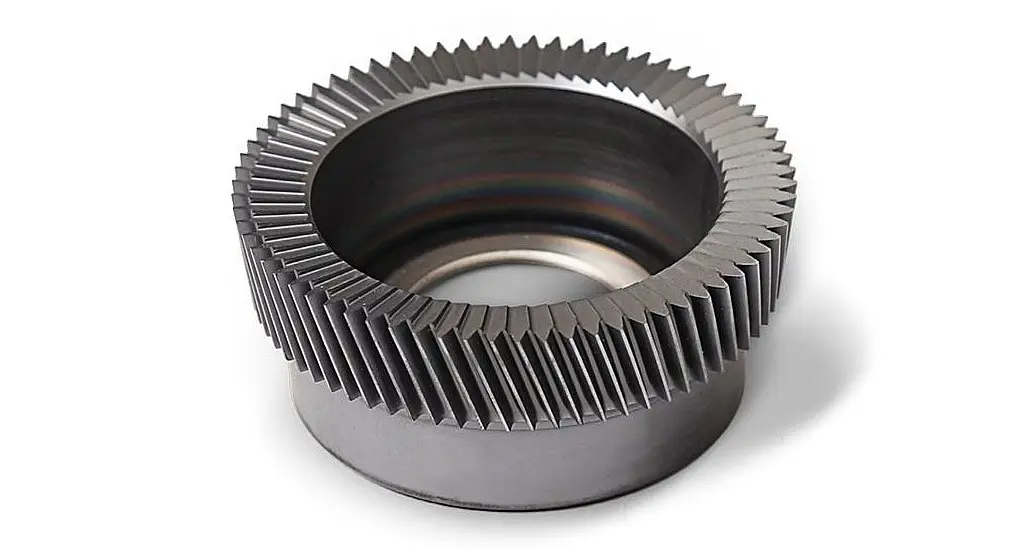

In addition to the forming methods (tools: end mill cutters and a gear milling cutter) and gear generating method (tools: hobs and Fellows shaper cutters)), the production technology of gears described here and here, the gearing can also be made using the following methods:
-
broaching - a method usually used in mass production due to the high costs of machines and tools (broaches and push broaches), in most cases used for internal toothings. In the case of large series, it is currently one of the most efficient production method, and in most cases also very well automated,
-
special tool heads on the machining centers - mostly in the case of large toothing, replacing solid end milling cutters with folded end mills. The tool roughly collects the material and both flanks are finished separately, also with an insert tool or with the grinding process. Due to the design of machining centers, the tool is usually mounted one sided and it is not the most advantageous form of machining smaller or medium modules, but it has considerable advantages in the production of larger ones.
-
Power Skiving / Scudding method - the newest, very fast method of machining teeth with special tools that resemble Fellows shaper cutters. This machining takes place either on machining centers with appropriate software or on dedicated machines. It is a combination of a much higher rotational speed of the table with the gear (1000-2000 rpm) than previously used, combined with a high rotational speed of a properly twisted cutting tool, as shown in Figure 2. Figure 1 shows the potential increase in productivity depending on the machining type the difference in productivity depending on the process is extreme, even up to about 1236% (Fig. 2) [1, 2].
 Fellowsa, Power Skiving/Dłutaki (noże) Fellowsa, Power Skiving 1-big_format-webp.webp)
Fig. 1. Comparison of the productivity of various machining methods: a) shaping, b) hobbing, c) Power Skiving with a PM steel tool, d) Power Skiving with a dry carbide tool with a moderate cutting speed, e) Power Skiving with a dry carbide tool at high speed cutting [3]
 Fellowsa, Power Skiving/Dłutaki (noże) Fellowsa, Power Skiving 2-big_format-webp.webp)
Fig. 2. Power-Skivingu Tool position [3]
Sources:
-
McGuinn J., Skiving Is Thriving on a Global Scale, Gear Technology,January/February 2018, s. 42-47
-
Rainert A., Influence of the gear geometry and the machine on the power-skiving cutter design, Werkzeug Technik, Nr 162, 25 August 2017, s. 86-90
-
Stadtfeld, H.J., Power Skiving of Cylindrical Gears on Different Machine Platforms, Gear Technology,January/February 2014, s. 52-62

